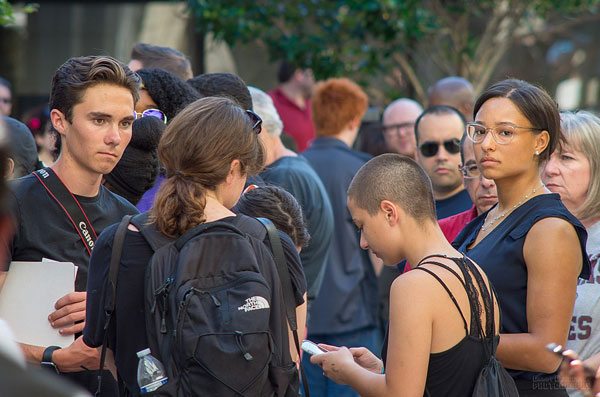
May 3, 2018; Washington Post
Sixteen years ago, in A Survival Guide for Leaders, Ron Heifetz and Marty Linsky wrote that taking leadership carries with its some predictable dangers. These, they wrote, could include being attacked, marginalized, seduced, or diverted. This well-worn observation plays out over and over again, with the methods being circulated in fast succession that matches the intensity of the effort being led. In other words, the more you threaten the status quo, the more you may be subject to these reactions.
Thus, following the mass shooting at Marjory Stoneman Douglas High School in February, the survivors of the attack have organized and called for stricter gun reform, only to face harsh criticism. Two students in particular, Emma González and David Hogg, have absorbed most of the abuse. Shortly after 17 students were murdered at their high school, González and Hogg were disparaged by a Maine politician who called González a “skinhead lesbian” and Hogg a “moron” and a “bald-faced liar.” Later, González was photoshopped ripping up the Constitution and criticized for wearing a patch celebrating her Cuban heritage. Hogg was accused of never actually being present during the shooting and “whining” about his college rejections. The National Rifle Association even went as far as to falsely claim that the students were “backed by radicals with a history of violent threats, language, and actions.” Gun advocates have stopped at nothing to weaken the movement and intimidate its leaders.
Despite the onslaught of senseless criticism, the anti-gun-violence movement has remained resilient, and now consists of teenagers, adults, students, donors and a myriad of nonprofit organizations. Days after the Parkland shooting, the Connecticut chapter of Moms Demand Action for Gun Sense in America reported a spike in meeting attendance—from the usual 15 people to nearly 200. Just before the Parkland students organized a 200,000-person strong March for Our Lives in Washington, DC (largely funded by crowdfunding and celebrity donations), Everytown for Gun Safety, a New York-based nonprofit, pledged $2.5 million to support sister marches in other cities.
Nonprofit support for the anti-gun-violence movement has not stopped there. The tireless work produced by organizations such as the National Education Association (NEA) and the National Association of School Resource Officers has advocated on behalf of those who overwhelmingly oppose allowing more guns in schools. According to the NEA, 82 percent of educators said they would not carry a gun in school. However, in the two months following the Parkland shooting, politicians introduced 25 measures to arm teachers and staff members in schools; fortunately, only one passed.
Sign up for our free newsletters
Subscribe to NPQ's newsletters to have our top stories delivered directly to your inbox.
By signing up, you agree to our privacy policy and terms of use, and to receive messages from NPQ and our partners.
Perhaps, if our government officials were quicker to respond to widespread gun violence, such a persistent and forceful movement would not be necessary. However, it is clear that the students and nonprofits behind anti-gun-violence activism have no intention of stopping. As summer vacation approaches, students contemplate ways to carry on their activism even when they are no longer summoned together out of necessity. Gavin Pierce, a student in Los Angeles, put it simply: “Everyone is really eager to keep this going and to keep on organizing until we see real change.”
But we would leave the reader with one of Heifetz and Linsky’s most powerful cautions:
The ability to maintain perspective in the midst of action is critical to lowering resistance. Any military officer knows the importance of maintaining the capacity for reflection, especially in the “fog of war.” Great athletes must simultaneously play the game and observe it as a whole. We call this skill “getting off the dance floor and going to the balcony,” an image that captures the mental activity of stepping back from the action and asking, “What’s really going on here?”
Leadership is an improvisational art. You may be guided by an overarching vision, clear values, and a strategic plan, but what you actually do from moment to moment cannot be scripted. You must respond as events unfold. To use our metaphor, you have to move back and forth from the balcony to the dance floor, over and over again throughout the days, weeks, months, and years. While today’s plan may make sense now, tomorrow you’ll discover the unanticipated effects of today’s actions and have to adjust accordingly. Sustaining good leadership, then, requires first and foremost the capacity to see what is happening to you and your initiative as it is happening and to understand how today’s turns in the road will affect tomorrow’s plans.
—Chelsea Reichert













